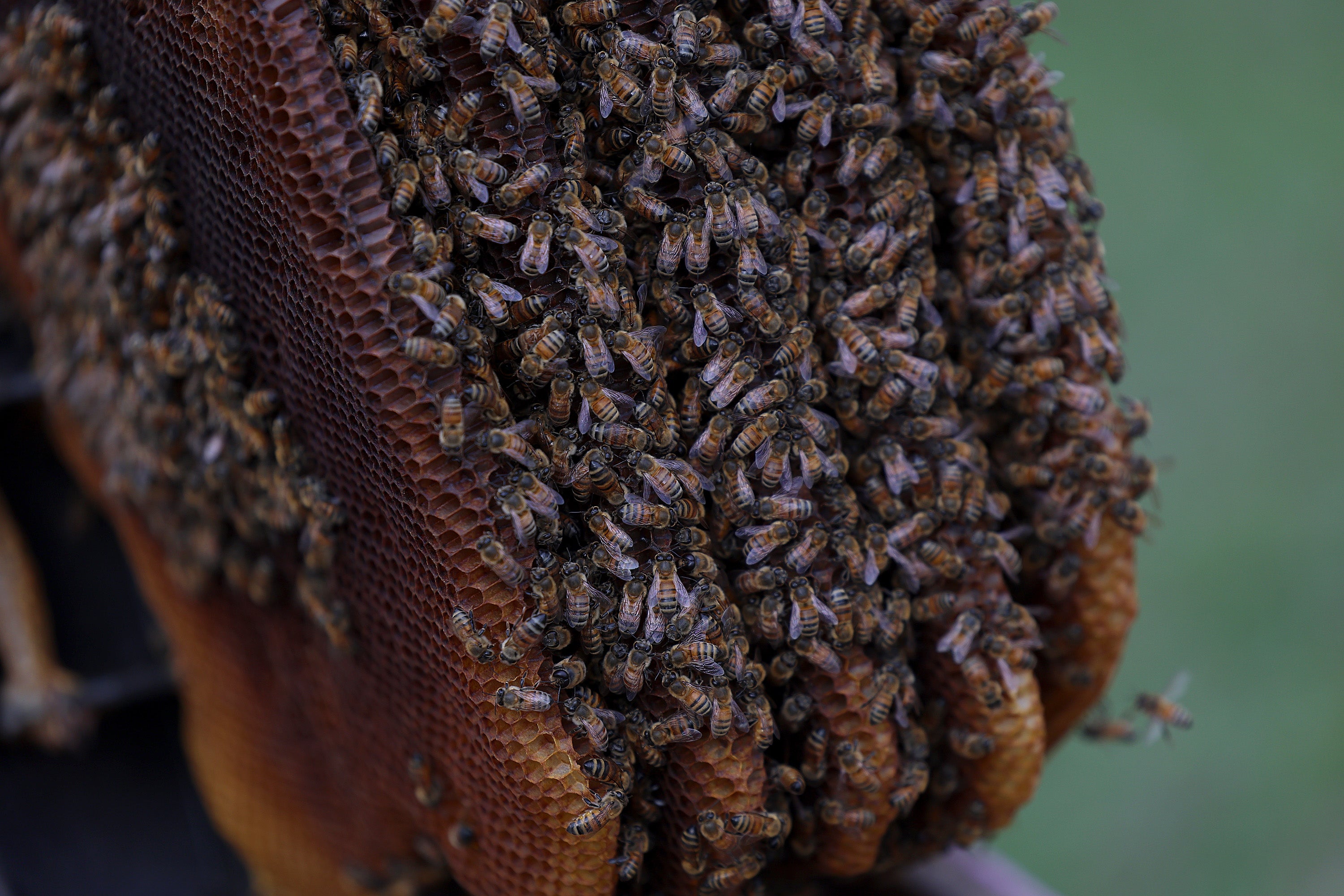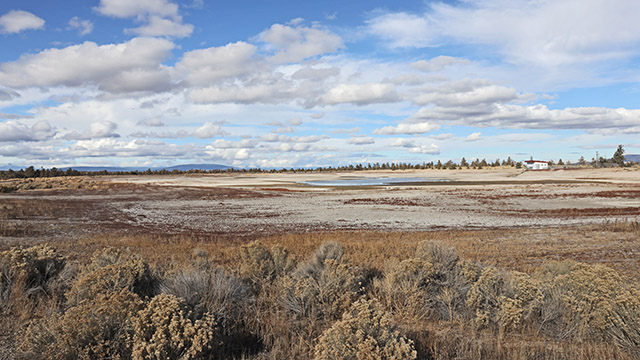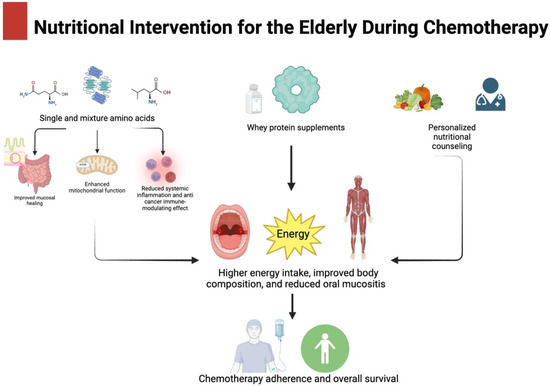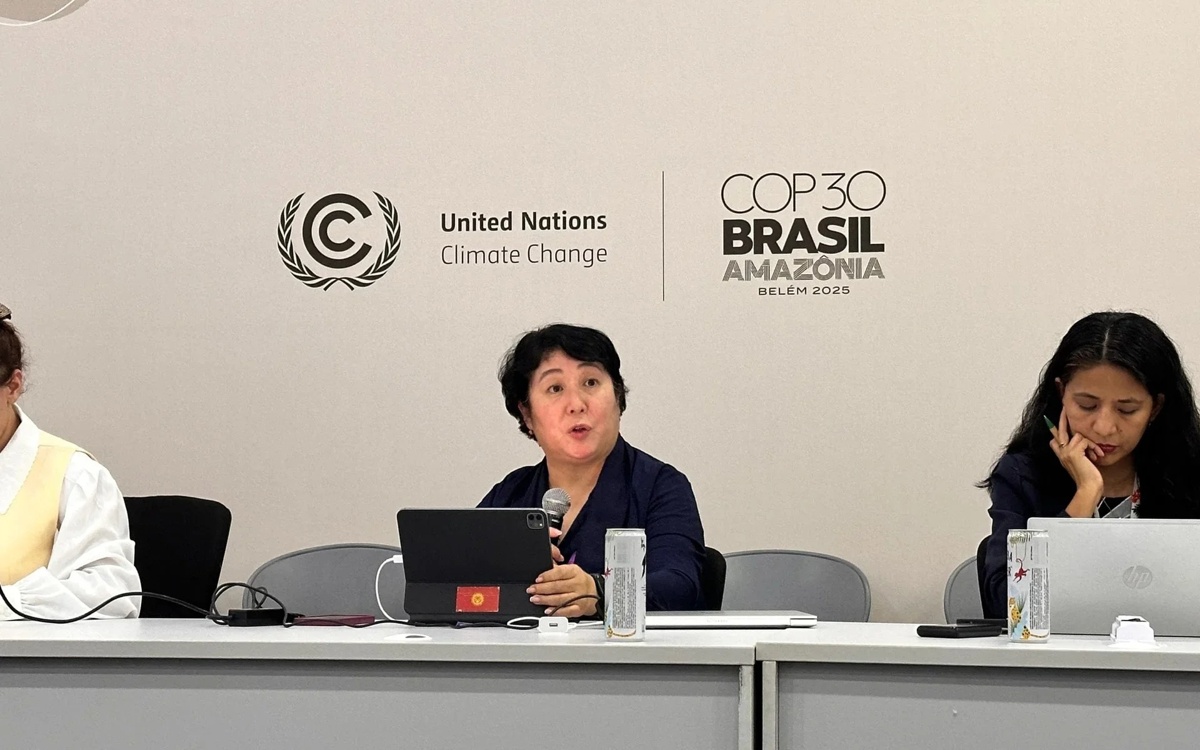For farms struggling with commercial bee loss, California native plants and bees could be key – LAist

Report on Native Pollinator Integration for Sustainable Agriculture in California
Executive Summary
An analysis of California’s agricultural practices reveals a critical over-reliance on the European honeybee, a single species facing record colony collapse. This poses a significant threat to food security and ecosystem stability, directly impacting the achievement of Sustainable Development Goals (SDGs), particularly SDG 2 (Zero Hunger) and SDG 15 (Life on Land). Research indicates that integrating California’s 1,600 native bee species into agricultural landscapes offers a resilient and productive alternative. This report outlines the challenges, research-backed solutions, and public engagement strategies for fostering native pollinator populations to advance sustainable agriculture and biodiversity conservation.
The Challenge to Sustainable Production and Biodiversity
Over-Reliance on a Fragile Pollinator
The agricultural sector in the United States has historically depended on the European honeybee for crop pollination. However, this model is proving unsustainable. Recent data indicates a severe crisis, with a 62% loss of commercial bee colonies last year. This fragility in the food production system presents a direct challenge to **SDG 2 (Zero Hunger)**, which aims to ensure sustainable food production systems.
The Untapped Potential of Native Species
California is a global hotspot for bee biodiversity, hosting nearly 10% of the world’s bee species. These native pollinators are co-evolved with local flora and climates, making them inherently more resilient. University of California-affiliated projects have demonstrated that supporting native bee populations yields significant benefits, including:
- Increased primary crop yield.
- Enhanced effectiveness of commercial European honeybee colonies through competition.
Leveraging native pollinators is a key strategy for building resilient agricultural systems in line with **SDG 12 (Responsible Consumption and Production)**.
Strategies for Supporting Native Pollinators and Achieving SDG 15
Habitat Restoration as a Core Strategy
The primary method for supporting native bees involves habitat restoration. This directly addresses the targets of **SDG 15 (Life on Land)**, which calls for halting biodiversity loss and restoring terrestrial ecosystems. Key research findings include:
- The critical link between native bees and specific native plants, highlighting the need for habitat conservation to ensure the propagation of both.
- The successful use of planting hedgerows of native “bee plants” around agricultural fields, such as avocado groves.
- The establishment of thriving wild bee populations through these hedgerows, which then extend their pollination services to the main crops.
Promoting Pollinator Diversity
Effective ecosystem management requires supporting a wide array of pollinators, not just bees. Research confirms that creating habitats with native flora attracts a diverse range of species essential for a healthy ecosystem. This biodiversity contributes to the resilience targets within **SDG 15**.
- Bumblebees, which are native to Southern California, are highly effective pollinators for crops like avocados.
- Other crucial pollinators attracted to these habitats include flies, bats, butterflies, and birds such as hummingbirds.
Community Engagement and Public Action
The Role of Urban and Suburban Landscapes
Conservation efforts extend beyond agricultural land. Research indicates that the highest number and diversity of native bees are found in residential backyards where flowering species are maintained year-round. This finding underscores the vital role of community action in creating sustainable habitats, contributing to **SDG 11 (Sustainable Cities and Communities)** and **SDG 15 (Life on Land)**.
Recommendations for Public Participation
Individuals can directly contribute to pollinator conservation and climate resilience. The following actions are recommended:
- Plant native, drought-tolerant flora to provide year-round food sources for pollinators. This practice supports **SDG 13 (Climate Action)** by promoting water-wise gardening.
- A highly recommended species is *Encelia californica* (bush sunflower), a native plant that flowers nearly year-round and attracts a wide variety of bee species.
- Access publicly available resources, guides, and research from institutions like the University of California to implement effective pollinator support strategies.
1. Which SDGs are addressed or connected to the issues highlighted in the article?
SDG 2: Zero Hunger
- The article directly addresses food production by focusing on the pollination of agricultural crops like avocados. It discusses how the decline of European honeybees threatens farming and how supporting native bees can increase crop yield, which is essential for food security and sustainable agriculture.
SDG 15: Life on Land
- This is a central theme of the article. It highlights the importance of conserving biodiversity, specifically the 1,600 species of native bees in California. The article discusses the threats to these species, the importance of their relationship with native plants, and actions to protect them and their habitats, such as planting hedgerows. This directly relates to halting biodiversity loss and protecting terrestrial ecosystems.
SDG 8: Decent Work and Economic Growth
- The article connects pollinator health to economic outcomes for farmers. By showing that the presence of native bees increases crop yield and the effectiveness of commercial honeybees, it points to methods for increasing agricultural productivity. This enhances the economic viability and sustainability of farms, contributing to economic growth in the agricultural sector.
SDG 17: Partnerships for the Goals
- The article showcases collaboration among different stakeholders. It mentions “Projects affiliated with the University of California” working with farmers, research conducted by university farm advisors like Dr. Ben Faber, and the dissemination of resources (“research, guides and seminars”) to the public. This multi-stakeholder partnership between academia, farmers, and the public is crucial for achieving sustainable development.
2. What specific targets under those SDGs can be identified based on the article’s content?
Target 2.4: By 2030, ensure sustainable food production systems and implement resilient agricultural practices that increase productivity and production, that help maintain ecosystems, that strengthen capacity for adaptation to climate change, extreme weather, drought, flooding and other disasters and that progressively improve land and soil quality.
- The article describes the practice of integrating native bee populations into farms by planting native flora. This is a resilient agricultural practice that increases crop yield (“The presence of native pollinators not only increases crop yield”) and helps maintain local ecosystems, directly aligning with this target.
Target 15.5: Take urgent and significant action to reduce the degradation of natural habitats, halt the loss of biodiversity and, by 2020, protect and prevent the extinction of threatened species.
- The entire article is focused on addressing the decline of pollinators. It discusses the collapse of honeybee colonies and the need to support native bee populations to ensure the “propagation of that native plant.” The efforts described, such as creating habitats with “bee plants,” are direct actions to halt the loss of pollinator biodiversity.
Target 15.9: By 2020, integrate ecosystem and biodiversity values into national and local planning, development processes, poverty reduction strategies and accounts.
- The article provides a specific example of this target in action at a local level. Farmers are integrating biodiversity values into their agricultural planning by planting hedgerows and native flowers to support wild bees, demonstrating a change in development processes to support ecosystems.
Target 17.17: Encourage and promote effective public, public-private and civil society partnerships, building on the experience and resourcing strategies of partnerships.
- The article highlights a partnership between a public institution (University of California), its researchers (Dr. Ben Faber), and private entities (farmers). It also mentions making resources available to the public, which fosters a civil society partnership. This collaboration to “help farmers integrate and support native bee populations” is a clear example of the partnership described in this target.
3. Are there any indicators mentioned or implied in the article that can be used to measure progress towards the identified targets?
Rate of Commercial Bee Colony Collapse
- The article provides a stark metric: “62% of commercial bee colonies died last year.” A reduction in this percentage would be a direct indicator of progress in protecting pollinators and ensuring the stability of agricultural systems.
Increase in Crop Yield
- The article states that research has shown the presence of native pollinators “increases crop yield.” This is a quantifiable indicator that can be measured on farms that implement native bee-friendly practices, directly tracking progress towards Target 2.4.
Diversity and Abundance of Pollinator Species
- Progress can be measured by tracking the variety and number of pollinators. The article emphasizes “bringing in a diversity of bee species” and notes the presence of “bumblebees,” “flies, bats, butterflies and birds.” The statement that “the highest number in diversity of native bees are actually in backyards” implies that counting species diversity is a key metric.
Adoption of Conservation Practices
- The number of farms or the total acreage dedicated to conservation practices, such as planting “hedgerows around groves of avocado trees,” serves as an indicator of the integration of biodiversity values into agriculture (Target 15.9).
Availability of Public Resources and Partnerships
- The article mentions that researchers have “resources available to the public, including research, guides and seminars.” The number and accessibility of these resources, as well as the number of active partnerships like the “Projects affiliated with the University of California,” can be tracked as indicators of progress towards Target 17.17.
4. Create a table with three columns titled ‘SDGs, Targets and Indicators” to present the findings from analyzing the article.
| SDGs | Targets | Indicators |
|---|---|---|
| SDG 2: Zero Hunger | 2.4 Ensure sustainable food production systems and implement resilient agricultural practices that increase productivity. | Increase in crop yield (e.g., in avocado groves). |
| SDG 15: Life on Land | 15.5 Take urgent action to halt the loss of biodiversity and prevent the extinction of threatened species.
15.9 Integrate ecosystem and biodiversity values into local planning and development processes. |
Reduction in the rate of bee colony collapse (baseline of 62% mentioned).
Increase in the diversity and abundance of native bee species and other pollinators. Number of farms/acreage implementing conservation practices like planting native hedgerows. |
| SDG 8: Decent Work and Economic Growth | 8.2 Achieve higher levels of economic productivity through diversification and innovation. | Increase in agricultural productivity measured by crop yield. |
| SDG 17: Partnerships for the Goals | 17.17 Encourage and promote effective public, public-private and civil society partnerships. | Number of partnerships between research institutions (e.g., University of California) and farmers.
Number and accessibility of public resources (guides, seminars) on supporting native bees. |
Source: laist.com

What is Your Reaction?
 Like
0
Like
0
 Dislike
0
Dislike
0
 Love
0
Love
0
 Funny
0
Funny
0
 Angry
0
Angry
0
 Sad
0
Sad
0
 Wow
0
Wow
0












































































